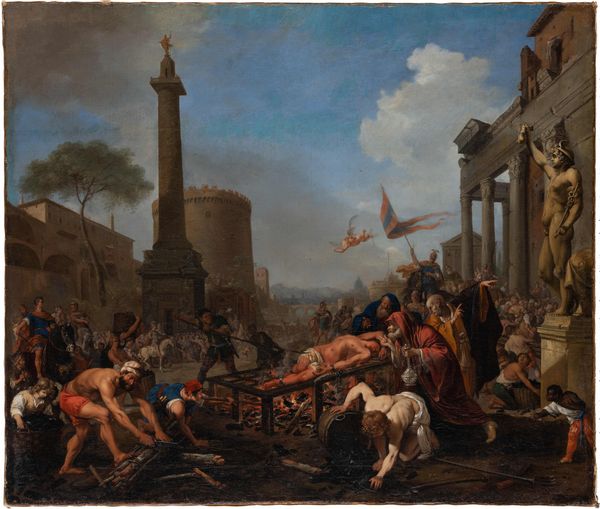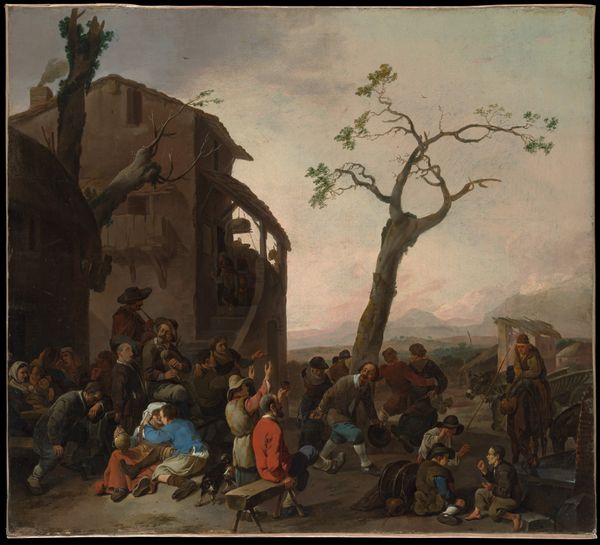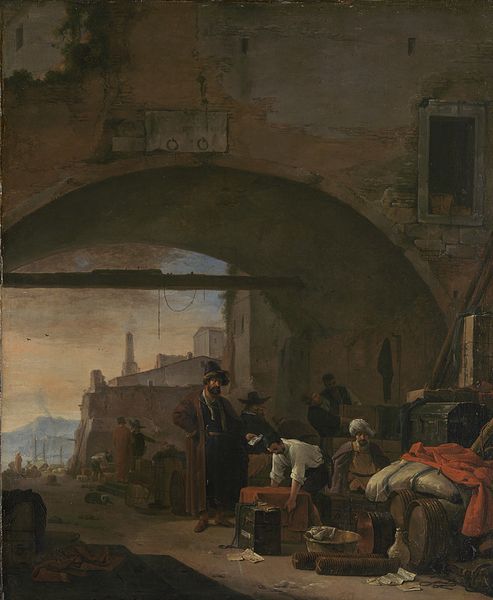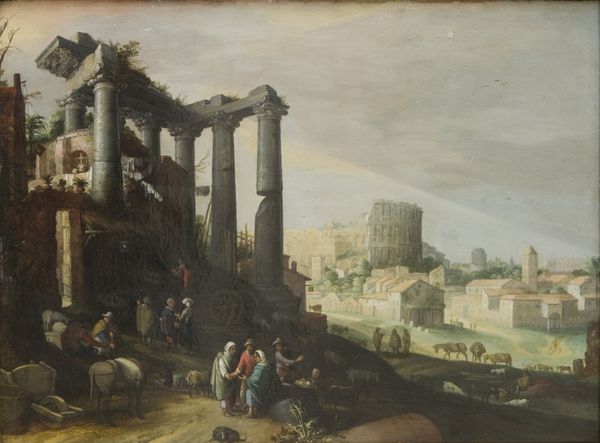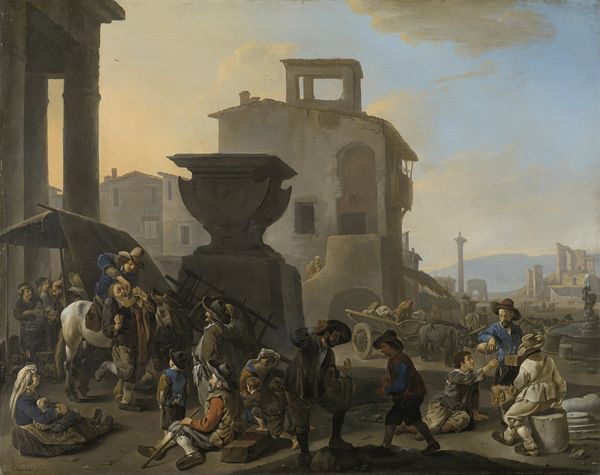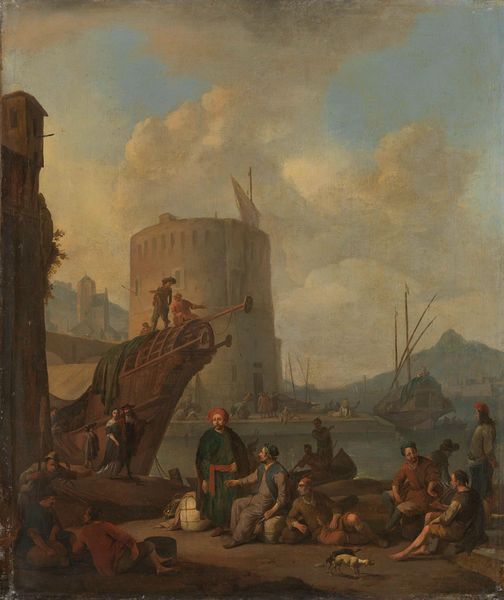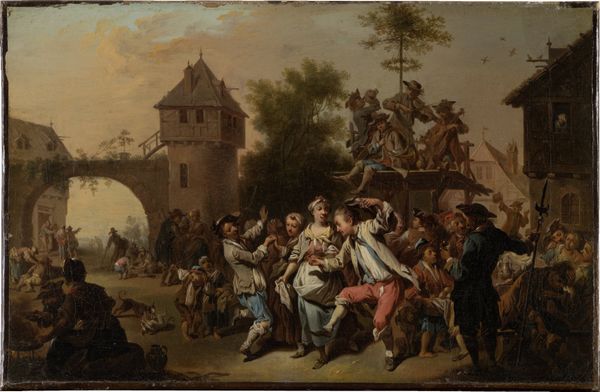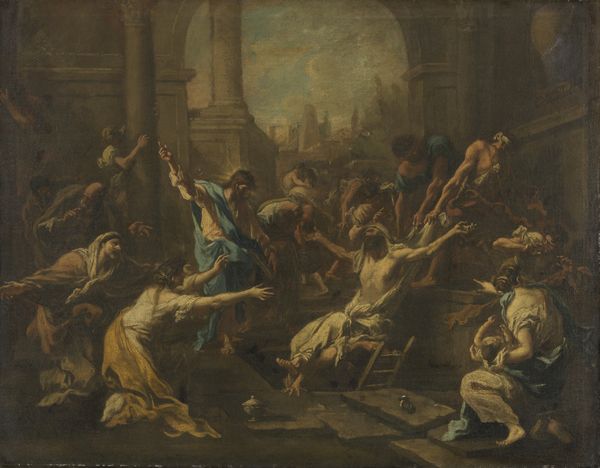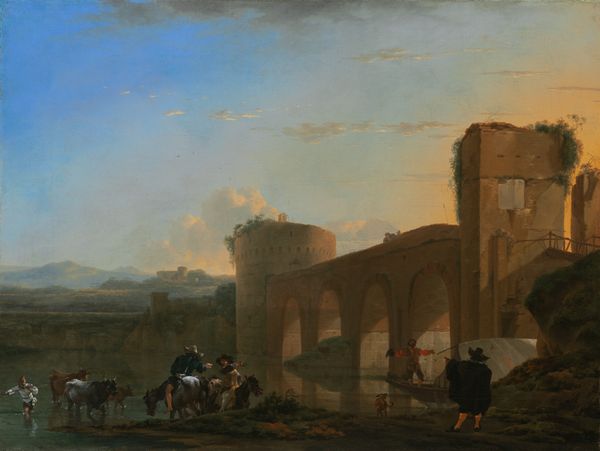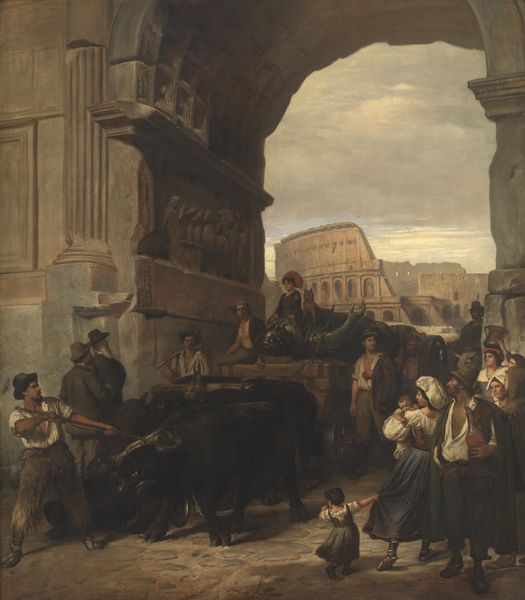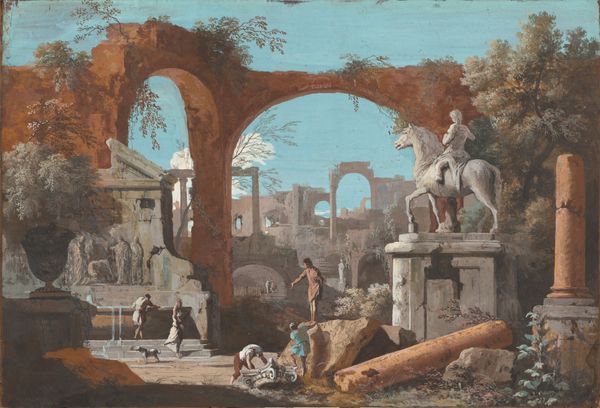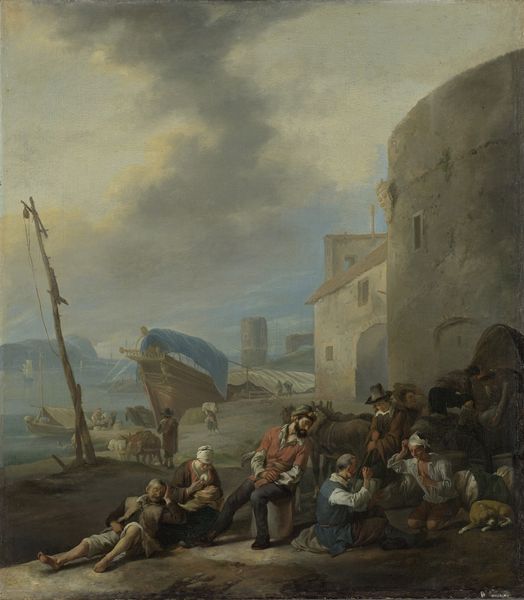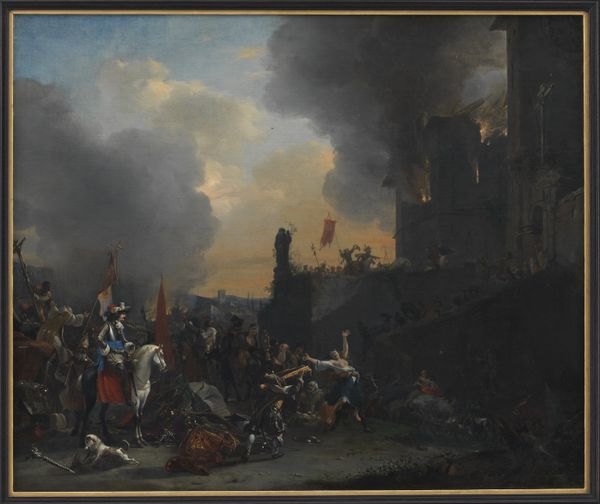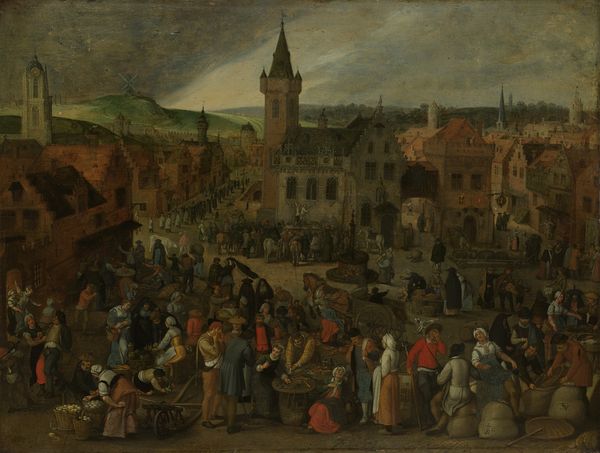
painting, oil-paint
#
baroque
#
painting
#
oil-paint
#
landscape
#
bird
#
figuration
#
child
#
underpainting
#
men
#
genre-painting
Dimensions: 25 x 29 1/2 in. (63.5 x 74.9 cm)
Copyright: Public Domain
Editor: So, this is "The Tame Magpie" by Alessandro Magnasco, painted around 1707-1708. It's an oil on canvas, and it strikes me as a somewhat chaotic scene, like a snapshot of everyday life, but with this really dramatic, almost theatrical Baroque flair. What do you see in this piece, looking at it from your perspective? Curator: Well, seeing it historically, Magnasco’s genre paintings often depicted unconventional subject matter and his figures tended to exist on the margins of society. It challenges the traditional art establishment’s expectations regarding who and what should be depicted. The lively interactions with the bird can symbolize the broader sociopolitical relationships, think patronage perhaps or social roles between children and adults, consider if that plays into power dynamics too. How does the landscape, with its broken architecture, contribute to this overall impression? Editor: That's interesting, I hadn’t really considered the landscape itself as commenting on society. It does look pretty ruinous. I mostly just saw it as... well, scenery. So, you think that by showing these figures among the ruins, Magnasco is making a statement about the societal structures of the time? Curator: Precisely! The ruins might represent the fading grandeur of established institutions, with this somewhat unidealized and at times, impoverished figuration taking center stage. Artworks such as “The Tame Magpie” prompts critical thought regarding the art institution itself. Consider how these scenes and the way in which they're captured encourage or discourage viewer participation or identification. Does it inspire empathy, judgment, or something else? Editor: I see what you mean now. Thinking about it as a challenge to the art establishment rather than just a scene makes it far more engaging and adds another layer to the composition! Curator: Indeed, and remember that understanding how such works were received, collected, and displayed reveals much about the period’s cultural values and power structures. Editor: Thanks! It really helps to think of art in the broader historical context. I’ll definitely keep this in mind moving forward.
Comments
No comments
Be the first to comment and join the conversation on the ultimate creative platform.
